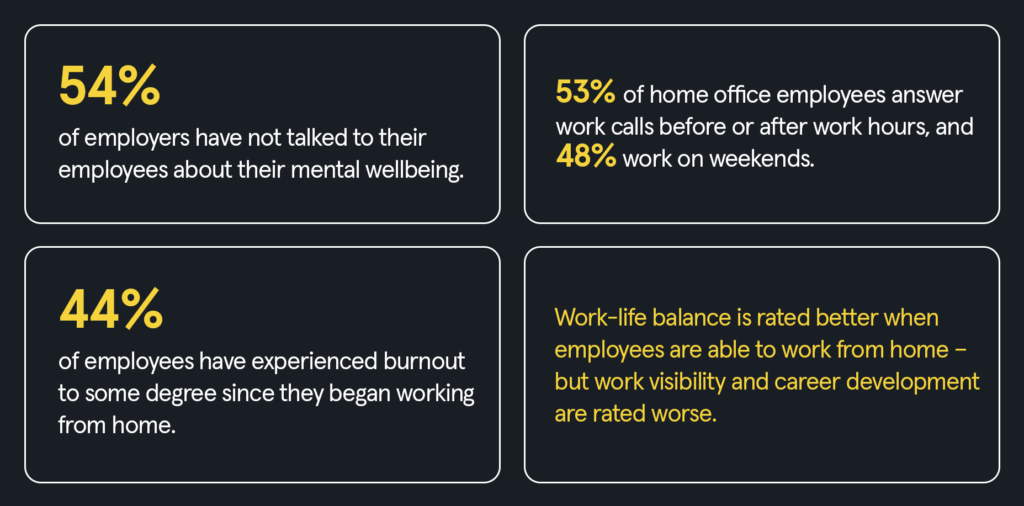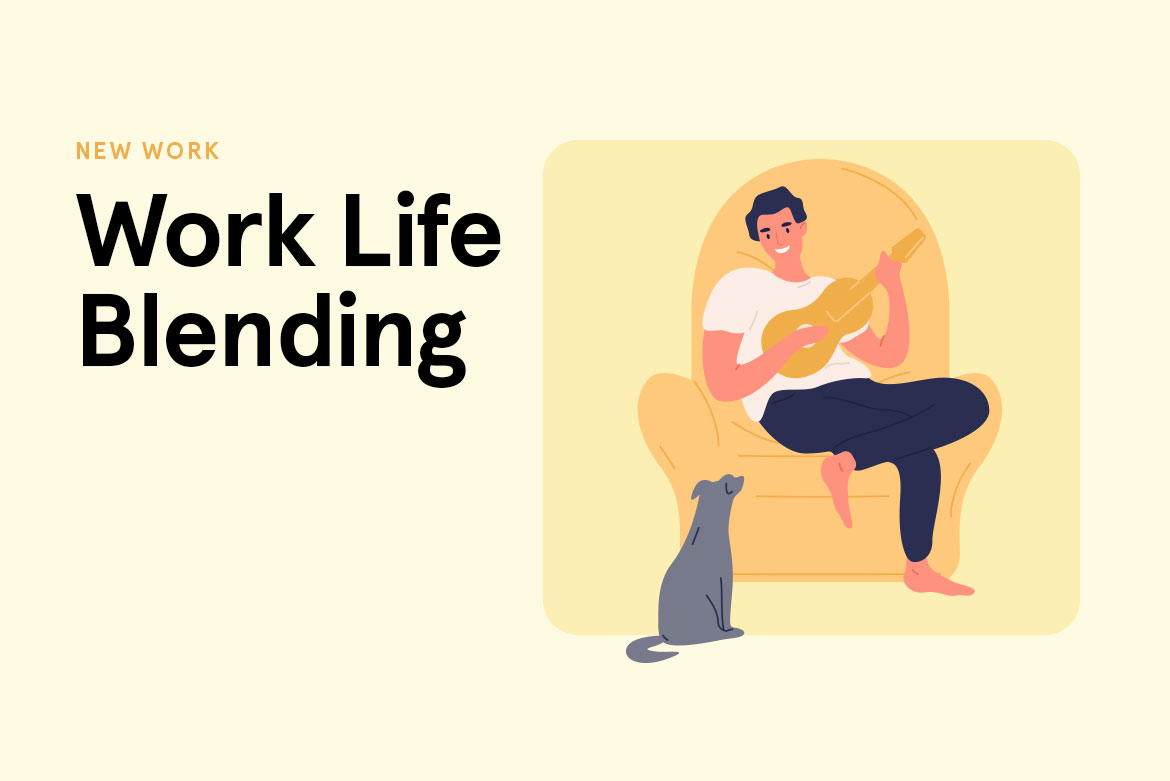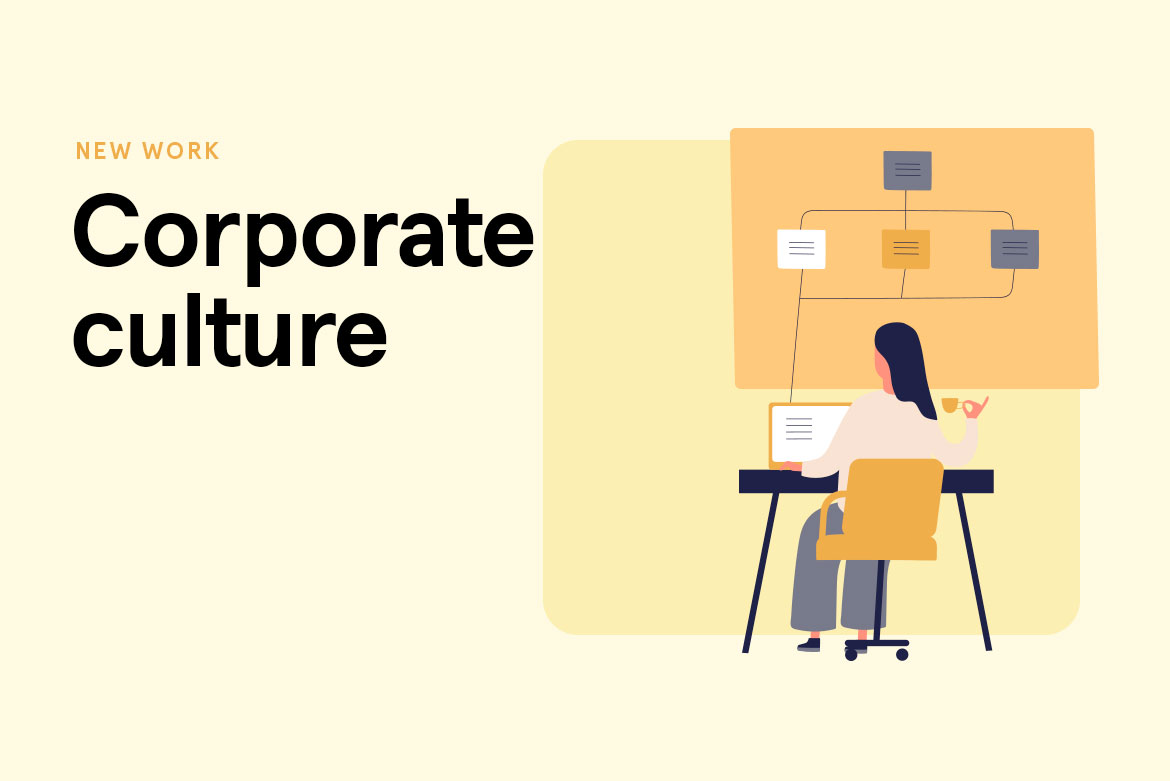Modern work is undergoing rapid change. In times of remote and hybrid work, employees and employers alike are facing massive challenges as the boundaries between private and professional life become increasingly blurred.
For example, a recent study of remote workers in small and medium-sized businesses by Capterra – a leading provider of software user reviews – found that 53% of employees who work from home say they answer work calls before or after their working hours, and 48% say they work on weekends. To look beyond these negative consequences of work-life blending, it’s worth asking broader questions:
What is behind the model of work-life blending, what impact does it have on contemporary working life and how can negative effects be countered?
Work-life blending vs. work-life balance
There are many buzzwords associated with New Work. Here, we’ll compare two of the most fundamental concepts associated with the movement: Work-life balance and work-life blending.
Work-life balance – the starting point
For a long time, a good work-life balance was considered the benchmark for new working models. Essentially, the concept is based on a clear separation of working time and private life. Here, work is partly seen as a necessary evil that was ideally brought into perfect balance by leisure time or family life.
Through the course of the digital transformation and employees being constantly available as a result, the rigid boundaries between work and leisure collapsed. This development was further exacerbated by the onset of the coronavirus pandemic in 2020, making the home office the standard for those whose work is not tied to a specific location.
The evolution – work-life blending
When work starts to take place in the home, it suddenly becomes more flexible. A conference call can be held in the evenings, while private errands can be run during official working hours.
Work-life blending refers to the mixing of work and personal time, and is often referred to as the negative side of New Work.
In this context, it’s worth highlighting the different needs of generations Y and Z:
Generation Y, those born between 1980 and 1990, have a generally positive attitude toward mixing work and private life.
In contrast, Generation Z-ers, which includes those born after 1990, favor a greater separation of work and private life.
What are the effects of work-life blending?

Advantages
Here’s an overview of the pros of work-life blending:
- More flexibility: Private appointments can be scheduled during the day without having to sacrifice vacation days. For example, a quick shopping trip or a doctor’s appointment can easily be integrated into the workday.
- More autonomy: Employees decide for themselves when they complete which tasks and projects. This results in increased freedom in the work-life context, and generally increases employee satisfaction.
- Higher productivity: Not everyone works equally well at all times of day. Work-life blending allows employees to pay attention to their own biorhythms. Those who can make more targeted use of their top performance phases stand to increase their productivity.
- Balancing work and family: Work-life blending allows employees to accommodate family time more easily. For example, they can go home earlier on days with low workloads or bring or pick up children for sports and other leisure activities, while staying available for calls or emails.
Risks
As good as it might sound, work-life blending has some serious downsides. Here’s a list of the main cons:
- Danger of self-exploitation: In many industries, on-site presence of employees is still demanded, especially after the end of lockdown periods. Since working from home makes employees’ work less visible to the outside world, many feel strong pressure to over-perform. In extreme cases, this can lead to self-exploitation.
- Overtime: Being available at all times can lead to ad hoc work tasks being completed on the off-hours without being documented, resulting in unpaid overtime.
- Unclear structures: As a counterweight to flexibility, there is a threat of the blurring of clear boundaries between private life and working time. This can be unsettling and holds the potential for conflict.
- A higher risk of health problem: One thing is certain – a lack of control and constant overtime are detrimental to anyone’s health. Not everyone is able to adequately switch off when there isn’t a clear physical separation between work and leisure time. This can lead to inner turmoil and sleep disturbances, among other health issues.
What positive measures can be put in place to counteract the negative effects of work-life blending?
In order to subvert the negative effects of work-life blending, it’s a good idea to consider implementing the following measures:
- Add structure to flexibility:
- Flexi-time is good, but there should still be core working hours for joint meetings.
- Consider hybrid working, a blend of office time and work-from-home days.
- Establish flat hierarchies and clear communication channels.
- Effective self-organization: In order to keep deadlines and priorities in view at all times, even when employees are working from home, good self-organization is indispensable. Software tools like Task Manager are great for keeping track of everything.
- Clear rules regarding working hours and time management: Breaks and rest periods are important to field the potential for constant, excessive demands. Setting rules regarding working hours and employee availability is essential here. In general, employees should receive support in time management and some sort of time-recording system should be used.
- Implement and use the appropriate communication channels: Here, it’s up to management to figure out how their own team can best communicate with each other.
- Create contact points and implement measures for burnout prevention: Employees are often reluctant to talk to their superiors about their mental health. Measures such as anonymous surveys, one-on-one conversations with trusted individuals, concrete support programs and other preventive offers such as company sports can help here.







